The Great Lakes that surround Wisconsin, Lake Michigan and Lake Superior, hold many stories that define the identity of the state. Wisconsin is a land shaped by its surrounding water. The proximity of the Great Lakes has allowed Wisconsin to fashion a large part of its economic and tourism industries around water. Harbor towns along Lake Michigan demonstrate how the lakes have seeped into the culture and lives of Wisconsinites. The relationship between the water and land is not always idyllic as environmental and human factors threaten the quality of the lakes that provide so much for the state of Wisconsin. What has continued to bridge this connection between land and water over the years is the influence of individuals who traverse both areas.
Two Lakes, Two Legacies
The water along the shorelines of Wisconsin has been formative in developing the communities that make up the state. Lake Superior and Lake Michigan are both essential to the identity of Wisconsin’s water culture and economic growth, yet they have their own unique characteristics. Located on the northern edge of Wisconsin, Lake Superior is the largest freshwater lake in the world. It stretches 31,700 square miles and is home to several state parks, in addition to Wisconsin’s only national park, the Apostle Islands National Lakeshore. Lake Superior’s breathtaking scenery attracts tourists and nature seekers to come appreciate one of the most beautiful Great Lakes. Lake Michigan is the second largest of the Great Lakes, with a surface area of 22,300 square miles and is characterized more closely with Wisconsin’s industry than Lake Superior. This lake supports the economy in more robust ways through the transport of goods, boating, and maritime activity. At the same time, Lake Michigan is home to a long and varied shoreline that also experiences high rates of tourism.
Lake Superior
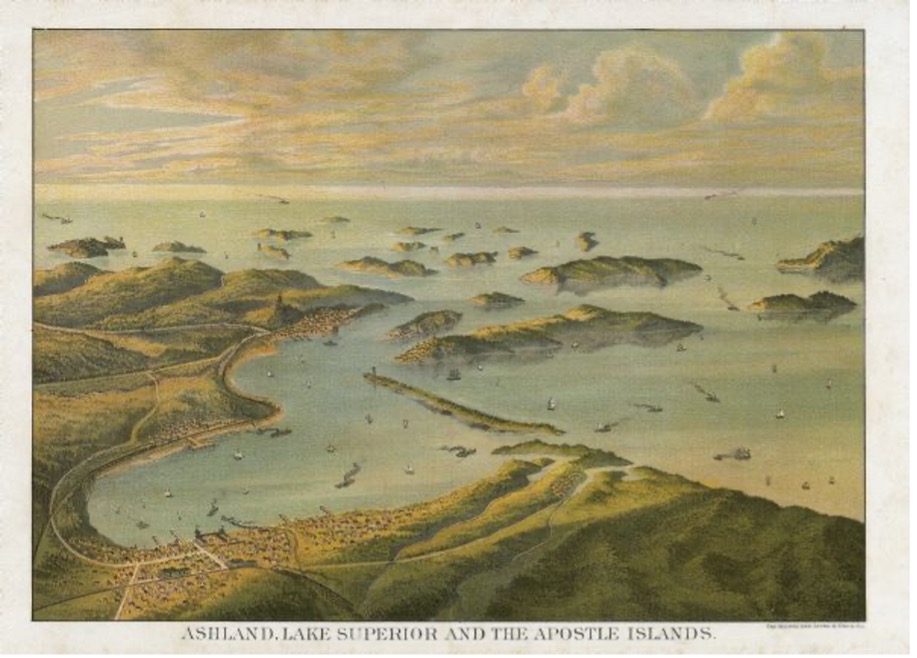
The distinction between Lake Superior and Lake Michigan is further reinforced by their difference in function. Both lakes participate in trade and support the tourism industry in Wisconsin; however, Lake Michigan’s extensive shoreline has allowed for an accessible way to transport goods into and out of the state and cultivate communities driven by the lake’s economy. Lake Superior’s coastal area is mostly comprised of the Bad River and Red Cliff Indian Reservations, along with forests and parks that support the recreational industry in Wisconsin.
Lake Michigan
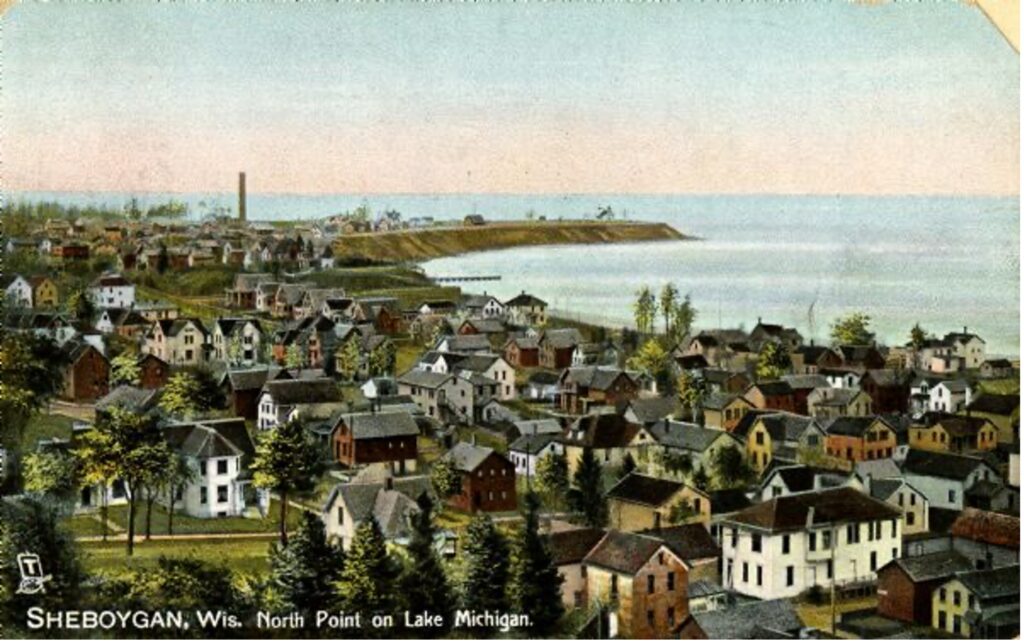
The Lakes on Land: Wisconsin's Harbor Towns
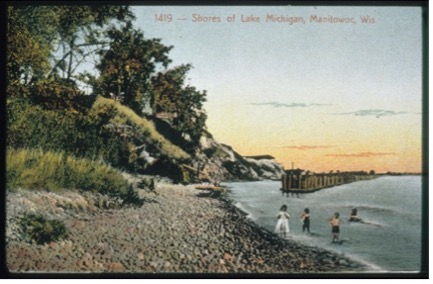
The lakes that border Wisconsin have their own appeal that attracts people from all over the state and the country to come enjoy all the splendors they have to offer. Almost everyone who lives in Wisconsin feels a certain connection to the lakes, whether they grew up near one, work on one, or go visit them in the summer. Beyond serving as a useful resource for the state, the Great Lakes are full of sandy beaches, beautiful nature, and opportunities for aquatic fun.
Lakes and rivers can be found throughout all of Wisconsin; however, the harbor towns along the shorelines of Lake Michigan and Lake Superior have their own unique history and relationship to the water. With 820 miles of shoreline, the harbor towns and cities of Wisconsin have been participating in maritime activity for more than 150 years, functioning as active spots of trade, transportation, and tourism. Charming harbor towns like Bayfield on Lake Superior and Port Washington on Lake Michigan are known as places designed for waterfront activity and leisure. Visitors flock to these quaint towns in the summertime for an aquatic-based escape. Harbor towns surrounding the Milwaukee area have been fostering their status as resort destinations since the late 1800s. The Whitefish Bay Pabst Resort was one of the most popular of these destinations. In addition to the emphasis on recreation and leisure, this resort exemplified the growing consumer culture in harbor towns with the selling of Cassel Soda Bottles through a partnership with the Cassel Soda Company. Bigger harbor cities like Milwaukee have different connections to the lake. Lake Michigan is an attraction of Milwaukee as well as a resource to the city, but it does not define its culture and lifestyle to the same degree as many harbor towns.
Wisconsin’s shoreline along Lake Michigan has been strongly connected to the nautical explorations and prosperity of North America for centuries. Often referred to as the “third coast”, this region of the Midwest functions in similar ways to the East and West Coasts in terms of commercial industry and lifestyle. Although the Great Lakes are much smaller than the Atlantic and Pacific oceans, Lake Michigan still fuels the country’s economy through tourism and employment.
Shipbuilding in Harbor Towns
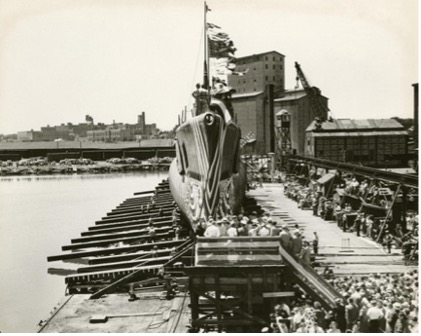
Wisconsin’s coast has long created a need for places to dock and build ships. Thus, towns along the east stretch of Wisconsin molded their culture around the natural landscape to provide harbors for the facilitation of trade. Shipbuilding became fundamental to the economy of Wisconsin’s early development, shaping communities like Manitowoc and Milwaukee to be centers for shipbuilding.
Since coming to prominence, the shipbuilding industry in Wisconsin’s harbor towns has undergone many changes to become what it is today. Originally established to support the state’s trade and transportation economy, shipbuilding soon became a useful tool in America’s war effort. The Manitowoc Shipbuilding Company, for example, developed materials from steel vessels to all-steel ships for the U.S. Navy. This industry fueled the economy by providing numerous jobs to the people of Wisconsin. During World War I, the company had 2,500 employees working in the shipyards. The shipbuilding industry advanced once again during WWII when the Manitowoc Shipbuilding Company built 28 submarines for the U.S. Navy.
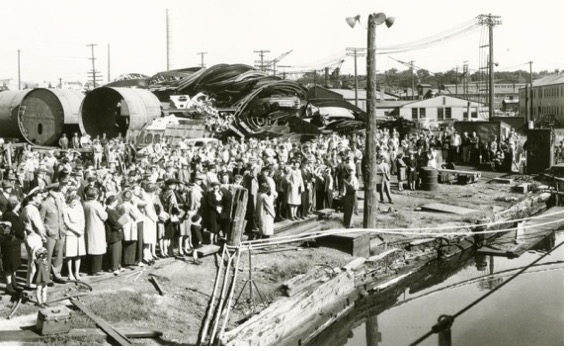
Water Safety and Harbor Towns
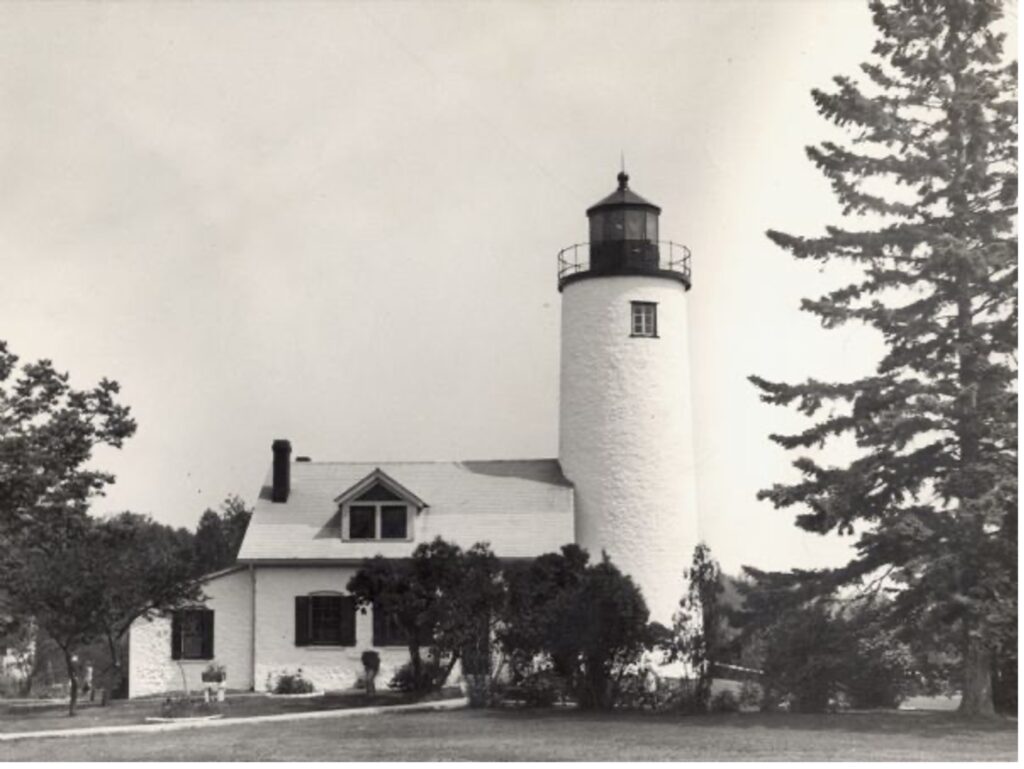
The frequency of water travel along the Great Lakes could not exist without the threat of danger that many early sailors faced as they braved the treacherous journeys across the lakes. Without any of the GPS or maps that we have today, water transportation became a dangerous feat that resulted in many disasters on the lakes. This lack of experience in maritime voyages led to the establishment of Lifesaving Stations in Wisconsin in harbor towns such as Milwaukee, Manitowoc, and Kenosha. The stations became an essential part of these harbor towns in the mid to late 19th century.
Previously using the night sky or fires at nearby land as their guides, it soon became clear to sailors and crews that the need for more advanced navigational aids was essential to safely continuing the maritime pursuits of the time. One of the solutions to this dilemma was to build lighthouses along the shoreline to serve as a beacon for those out on the water. Although many no longer operate today, 100 years ago lighthouses filled the shoreline as important structures and beacons of safe travel along the coast. Increased levels of ship travel prompted greater concern for the safety of shipping. Building and maintaining lighthouses became crucial to the identities and operations of these harbor towns. The establishment of lighthouses along the coast helped save many mariners’ lives over the years, while also solidifying lighthouses as sources of nautical pride and history. Of the more than 50 lighthouses in Wisconsin, 33 are still operational to this day. The oldest and tallest lighthouse still in operation is Racine’s Wind Point Lighthouse. The function of lighthouses has transitioned over time from essential tools commissioned to stop danger along the lakes to structures that draw tourism and hold the stories of Wisconsin’s past.
The harbor towns and cities that line Wisconsin’s coast will be forever tied to the aquatic culture and industry brought about by the Great Lakes. These coastal spots serve as tourist destinations and transportation hubs that exemplify the way water has shaped the lives of so many Wisconsinites.
Setting Sail on the Water
If we go beyond the shoreline and sink deeper into the lakes themselves, we can begin to appreciate the lakes as active participants in the history of Wisconsin’s water ways. Many of us are drawn to the water as a place of peace, but it is impossible to ignore the mystery that lurks beyond the shore. The Great Lakes have long been a source of discovery holding their own secrets and stories of Wisconsin’s past, shaping the lives of those who make use of the water today. The lakes of Wisconsin provide the state with natural resources and opportunities for trade and commerce, allowing the population of Wisconsin to use the lakes as active members of history. The allure and potential of the Great Lakes has also fostered tangible interactions between the people and the water through the building and use of ships for voyages on the lakes. Through these stories of adventure and ingenuity, we can take a dive past the shore and sail along the history of the lake.
Ships on the Water
The disasters that take place on the Great Lakes are an undeniable aspect of Wisconsin’s history. Many of these disasters were a result of the perilous nature and unpredictable weather of the lakes. Sailors on Lake Michigan and Lake Superior fought against the forces of wind, waves, and the absence of light. All these factors made for a dangerous highway along the water, sometimes culminating in a perfect storm – a shipwreck. Shipwrecks became an inevitable part of maritime activity and led to many tragedies felt deeply by coastal towns in Wisconsin. These shipwrecks tell rather grueling stories about the water, but also solidify ships as actors in nautical tales.
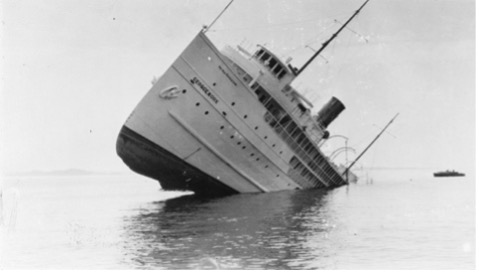
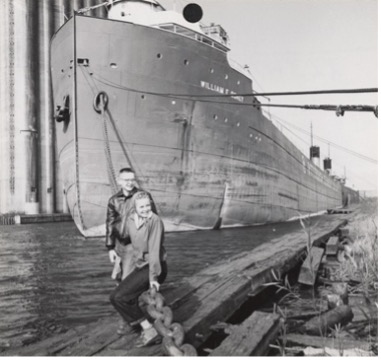
Still sailing on the Great Lakes today, ships have a long history of defining Wisconsin’s relationship with the water. Beginning by transporting metal parts to auto assembly plants and iron ore to steel mills, the ships that sail along Lake Michigan continue to participate in the trading of goods. The indisputable potential for commerce and transport led many coastal towns on Lake Michigan to invest in shipbuilding, an industry that made up a significant part of Wisconsin’s economy in the 19th and 20th centuries.
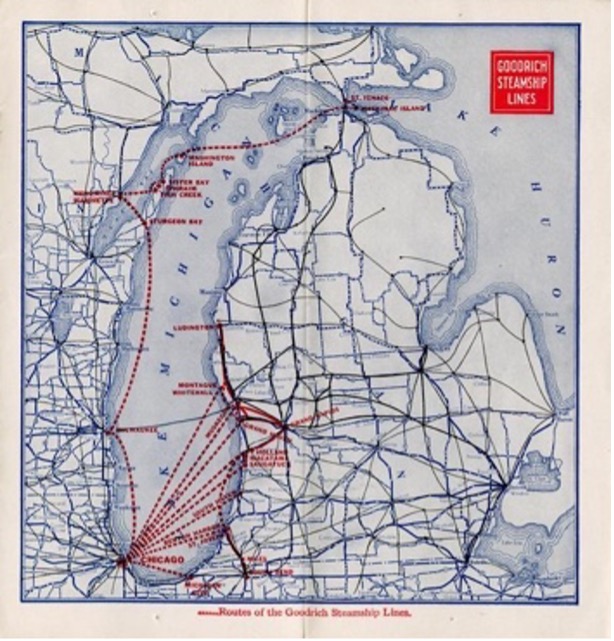
The use of ships along the Great Lakes also seeped into the tourism industry with the development of car ferries. Car ferries have been essential for the delivery of raw materials and equipment, while also transporting people across the lakes. The Goodrich Steamship Line was one of the largest and most popular passenger carrier companies to travel along the Great Lakes in the late 19th and early 20th century. With its many vessels, the Goodrich Line brought passengers between Milwaukee and Chicago for over 35 years.
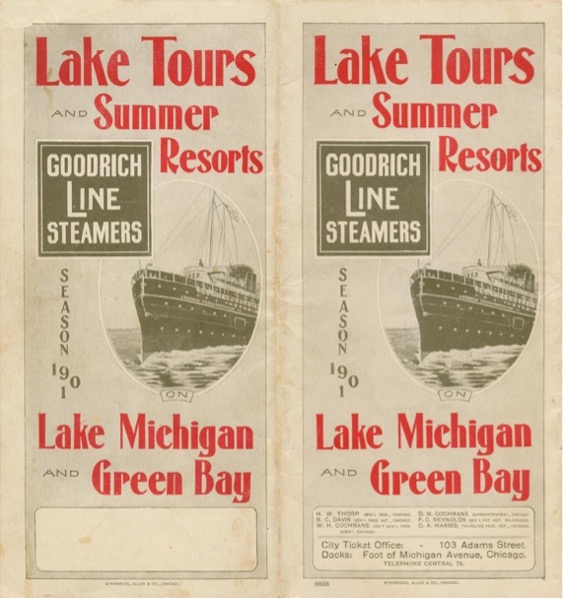
The Great Lakes have always been an active participant in the evolution of Wisconsin’s identity. The adventures on the water, specifically the stories of ships and shipbuilding, has fostered a community in Wisconsin that recognizes the dangers as well as the abundant possibilities that the Great Lakes have to offer.
The People of the Lakes
The legacy of the Great Lakes could not be complete without recognizing the people who lived out these lakes’ histories. People are what links the stories of the land and the water in the most meaningful way. Indigenous peoples were the original occupants of North American land and the Great Lakes region. The Great Lakes were home to indigenous communities long before European settlers came to Wisconsin. Lake Superior and Lake Michigan have been prominent actors in the lives and stories of the native people who continue to interact with and live along these waters to this day. Prominent indigenous groups living along the Great Lakes include tribes presently known as the Chippewa, Fox, Huron, Iroquois, Ottawa, Potawatomi, Menominee, Ojibwe, and Sioux. Beginning in the 1600’s, the values of these tribes – collectively referred to as the woodland tribes by anthropologists—became increasingly aligned. The woodland tribes gathered food and resources along the Great Lakes while also holding deep spiritual connections with the water.
When Europeans arrived in Wisconsin, they formed a different relationship with the Great Lakes and utilized the water to support the growth and industrialization of their towns. The Great Lakes established new occupations and opportunities over time for Wisconsinites. The bustling shipbuilding industry along Lake Michigan fueled the economy by providing numerous jobs to the people of Wisconsin. During World War I, the Manitowoc Shipbuilding Company had 2,500 employees working in the shipyards.
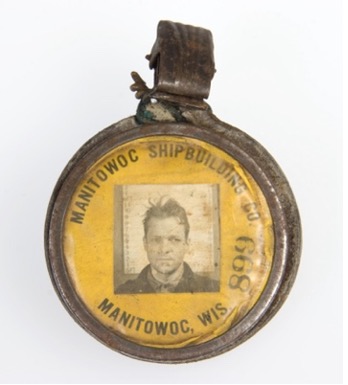
Beyond numerous jobs provided by the shipbuilding industry, the Great Lakes also popularized more niche positions of employment. Around the time when lighthouses were gaining prominence in the mid 19th century, a man named Orlando Metcalfe Poe was a leading force in lighthouse design. Poe’s contributions helped to improve travel on the Great Lakes by building taller lighthouses for the mariners to have better visibility. Lighthouse keepers along all of Wisconsin’s shoreline have also been prominent figures in maintaining water safety and living lives deeply intertwined with the water. The water also brought about new figures to honor. With the frequency of shipwrecks and tragedies on the water, rescuers were celebrated as heroes of the lakes.
Protecting the Great Lakes
Although it is people who have helped to connect the lakes and the land and cultivated this relationship, it is also people who have threatened the durability and quality of the Great Lakes. The bounty of the Great Lakes has long been appreciated yet only recently have there been greater efforts to understand the environmental factors at play between the land and the lakes. The Great Lakes, visited by more than 70 million tourists a year, are known world-wide as a defining natural feature of North America. They serve as the largest source of freshwater on the planet. More than 1.6 million Wisconsinites get their drinking water from the Great Lakes that border Wisconsin, yet both lakes are threatened by pollution and invasive species. Caused by pollution, poor policies, and overfishing in the 1940’s, the collapse of the commercial fishing 1940’s is an example of the human forces at play in impacting the “inland seas” between the United States and Canada. Invasive species such as zebra mussels arrived in the Great Lakes in the 1980’s. The zebra mussels were transported in the ballast water of the ships. Ballast water is freshwater or ocean water that gets stored in the ship before departure to control the weight and stability of the ship throughout a voyage. Once a ship docks in a new port, this ballast water is dumped into the water, often releasing bacteria and invasive species into the ecosystem. The presence of these mussels lowered the fish population which in turn threatened the fishing community in Wisconsin. The fishing population was further endangered by pollution and overfishing of the lakes, demonstrating what was for a long time a lack of consideration for care of the lakes by the people who utilize them.
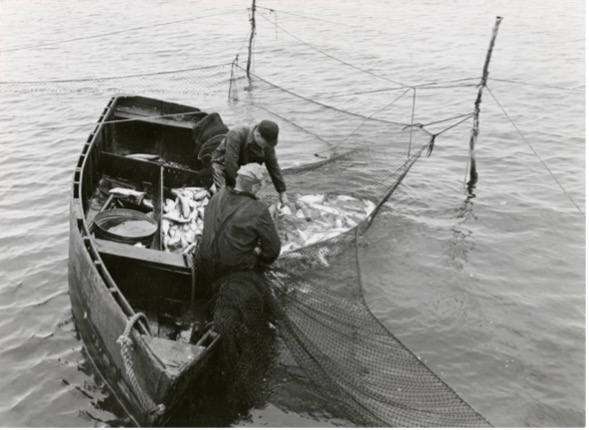
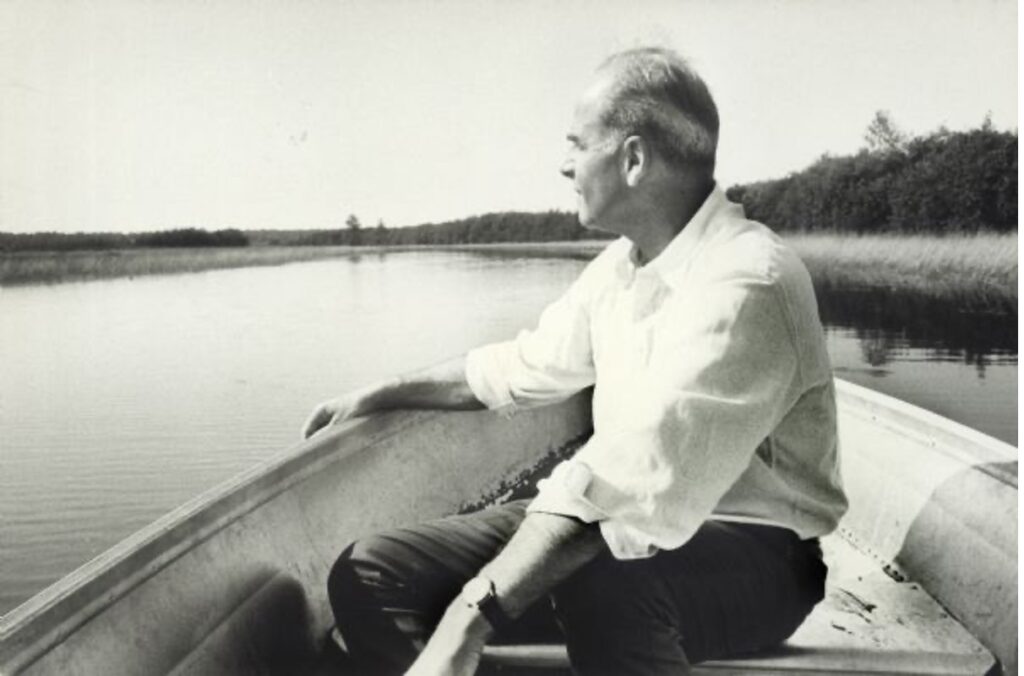
Early efforts to address these environmental concerns were instituted when Congress passed a bill in 1990 that prohibited ships from dumping ballasted water that contained these mussels into the lakes. In 2005, Governor Jim Doyle ordered a committee to investigate the spread of invasive species. As more and more scientific research has illuminated the need for better care of the lakes there has been greater consideration and awareness for preserving the quality of the water. The Apostle Island National Lakeshore has long been appreciated for its beautiful scenery as a group of 22 islands that sit in Lake Superior. Gaylord Nelson, former Governor of Wisconsin, U.S. Senator, and founder of Earth Day was a longtime advocate for the preservation of the Apostle Islands and committed much of his life to the conservation of the natural environment. In 2004, President George W. Bush signed legislation to create the Gaylord Nelson Wilderness, which classified 80% of the Apostle Island National Lakeshore as wilderness. Today, there are Lakewide Action and Management Plans for Lake Michigan and Lake Superior, which are committed to restoring and protecting the lakes through an eco-system-based strategy.
After a long history of human activity adversely impacting the quality of the Great Lakes, the effort to protect and preserve this natural resource is prioritized now more than ever. Through developing scientific research and governmental policies, the conversation of preserving the Great Lakes is propelled by the people of Wisconsin.
Wisconsin and Water: Forever Linked
The land of the northern Midwest and the water of the Great Lakes are geographically aligned and intimately connected. Lake Michigan and Lake Superior hold rich histories that are deeply intertwined with Wisconsin culture. Just as we are able to look back and understand how Wisconsin’s waterways have influenced its economy, industry, and tourism, we can also learn about the people who shaped these stories and continue to foster new ones. Appreciation of the Great Lakes’ past will allow us to bring more awareness and attentiveness to the ecological future of the “inland seas”.
Created by Bella Roberts, May 2023
SOURCES
“About Wisconsin’s Great Lakes – Lake Michigan and Lake Superior.” Wisconsin Department of Natural Resources. https://dnr.wisconsin.gov/topic/GreatLakes/Learn.html.
Friends of the Apostle Islands National Lakeshore. “History Mystery: Who is considered the “father of Apostle Islands National Lakeshore?” Friends of the Apostle Islands. June 14, 2021. https://friendsoftheapostleislands.org/2021/06/14/history-mystery-who-is-considered-the-father-of-apostle-islands-national-lakeshore/.
Great Lakes Legacy: an In Wisconsin Special. Great Lakes Connections: an In Wisconsin Special. ([Madison]: Wisconsin Public Television, 2007)
Roberts, Bruce, 1930-. Western Great Lakes Lighthouses: Michigan and Superior. (Guilford, Conn.: Globe Pequot Press, 2001.)
Wisconsin Historical Society. Wisconsin’s Great Lakes Shipwrecks. ([Madison, Wis.]: Wisconsin Historical Society, 2004)
Wisconsin Great Lakes Escape: a Guide to the Harbors of Wisconsin and Minnesota. [Madison] :[Wisconsin Division of Tourism, Dept. of Development], 1981.